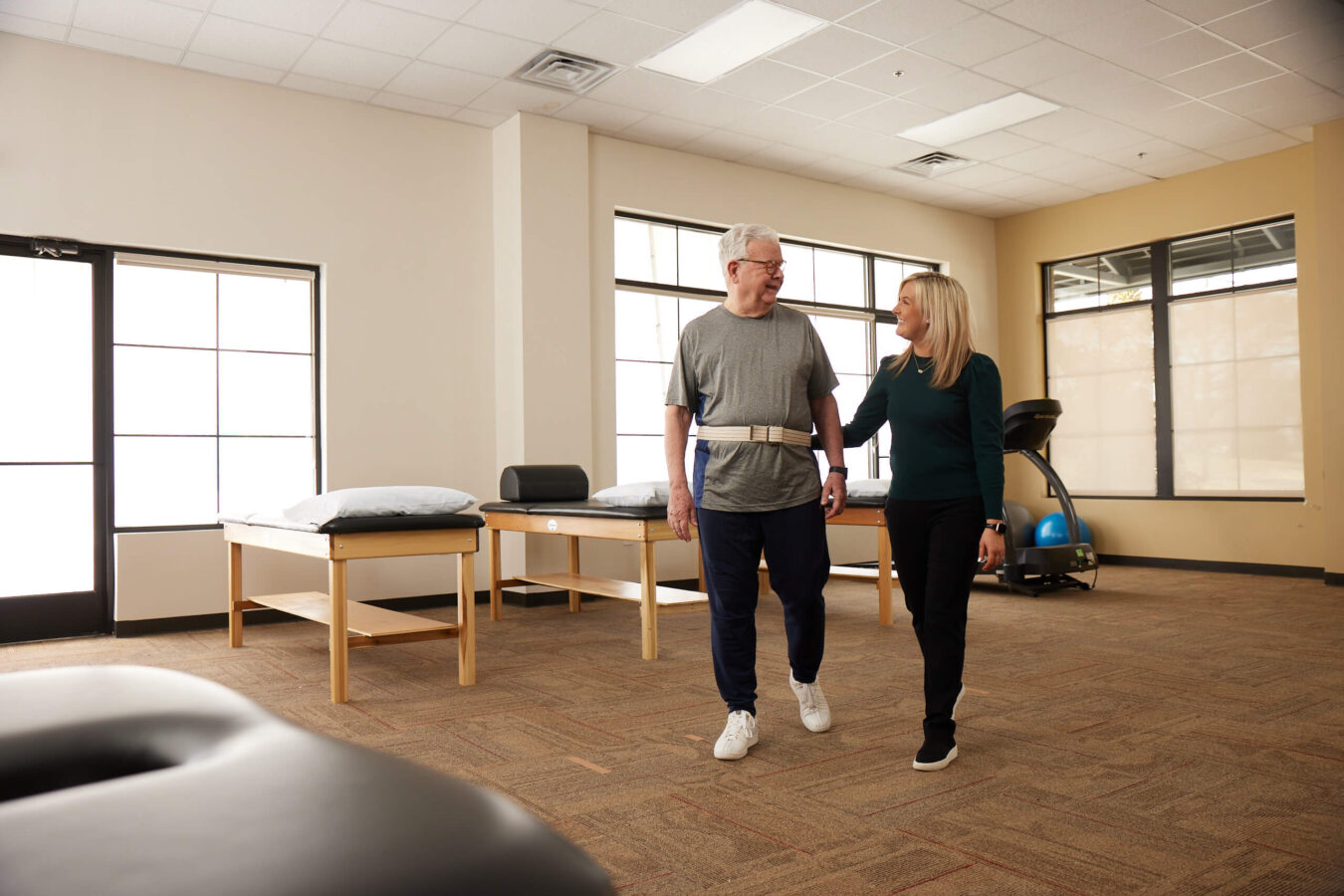
Medically reviewed by Misty Seidenburg
Neurological disorders are the leading cause of cognitive and physical disability worldwide. These conditions affect the structures that control communication between the brain and different parts of the body that provide thought, movement, and sensation.
Neurological disorders cause physical, cognitive, and emotional challenges that impact every aspect of daily life. Physical therapy for neurological disorders can help to improve patients’ symptoms so they can remain active and independent for as long as possible.
The central nervous system is comprised of the brain and spinal cord. The brain processes all the information we receive from the environment around us, and the spinal cord connects the brain to the rest of the body.
The peripheral nervous system is made up of peripheral nerves that carry sensory information from different areas of the body back to the brain, like touch, temperature, pain, and vibration.
The peripheral nervous system also delivers signals to our muscles, telling them to move and controls the processes that happen unconsciously—like our heartbeat and blood pressure.
Neurological disorders are conditions and injuries of central and peripheral nervous systems. They range from minor impairments to chronic conditions caused by disease, genetics, injuries, congenital abnormalities, and lifestyle or environmental conditions.
There are more than 1,000 known neurological disorders affecting approximately 15% of the global population. They include:
It’s worth noting that you do not need to be diagnosed with a neurological condition to benefit from physical therapy. As we age, our neurons don’t fire as rapidly as they used to, which can slow our reflexes and cause some loss of sensation. Physical therapy can improve these areas and reduce the risk of falls and other injuries among older patients.
Symptoms of neurological disorders vary widely depending on the diagnosis and progression of the condition. Unless you experience an obvious event like a stroke or a head injury, you might not give much thought to some of the more subtle signs of neurological impairment like sensory changes, speech problems, or mild challenges with gait and balance.
For these reasons, it’s so important to keep up with your routine screenings and wellness visits to detect and discuss any changes with your healthcare provider. Many patients benefit from early intervention and physical therapy for neurological disorders to slow symptom progression and improve their functional mobility.
Neurological physical therapy offers several treatments and techniques to address various symptoms associated with neurological impairments.
The process begins with an initial evaluation to review the patient’s health history followed by a physical exam. During this exam, the physical therapist assesses the patient’s coordination, range of motion, muscle tone, and strength.
They also check to see if the patient is experiencing changes in attention, sensation, and cognition. The physical therapist also evaluates the patient’s gate and balance, and their ability to transfer from sitting to standing and other routine transitions.
All of this information is used to create a treatment plan based on the patient’s unique symptoms and neurological therapy goals.
Treatment may include:
Physical therapists also help with activities of daily living, or ADLs, which are the essential tasks that healthy individuals can do without assistance like feeding, dressing, and personal hygiene. For many patients, the ability to remain self-sufficient in this regard can be incredibly meaningful, even if they are living with family or in a residential facility.
Physical therapy is often prescribed immediately following a neurological event because of the difference it can make in a patient’s outcome. Research confirms physical therapy improves balance and stability to lower the fall rate among those with neurological disorders.
In seniors with neurological impairment, physical therapy is shown to enhance brain and neuromuscular function, and also mitigate the neuromuscular side effects of underlying conditions for a better overall quality of life. Regular exercise is also good for mental health, which is beneficial for patients at risk of anxiety and depression due to chronic illness.
If neurological symptoms are impacting your life, physical therapy may be the key to regaining some of your independence and feeling more like yourself. A new-patient screening is the first step. Find a physical therapy clinic near you to get started.
